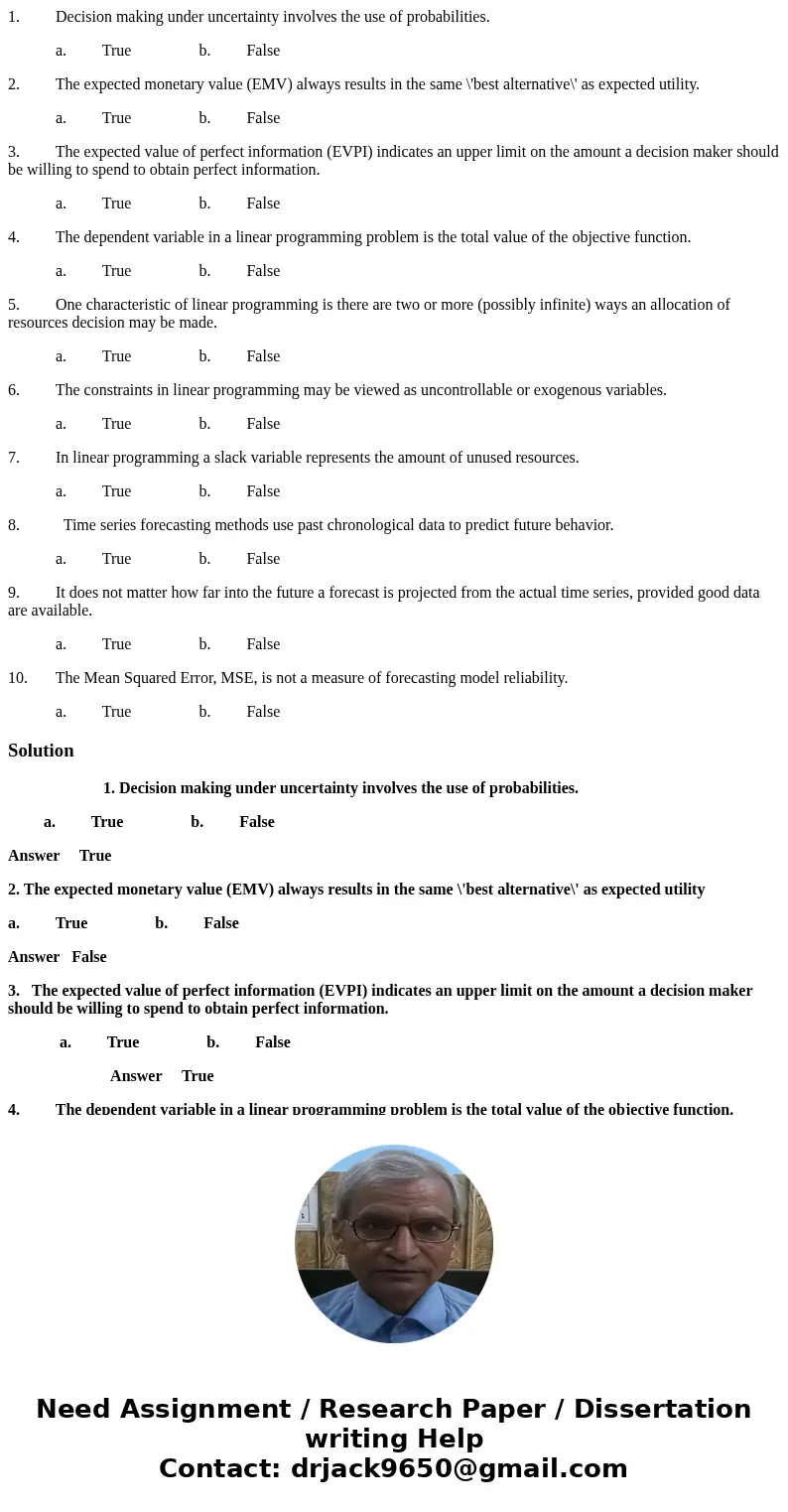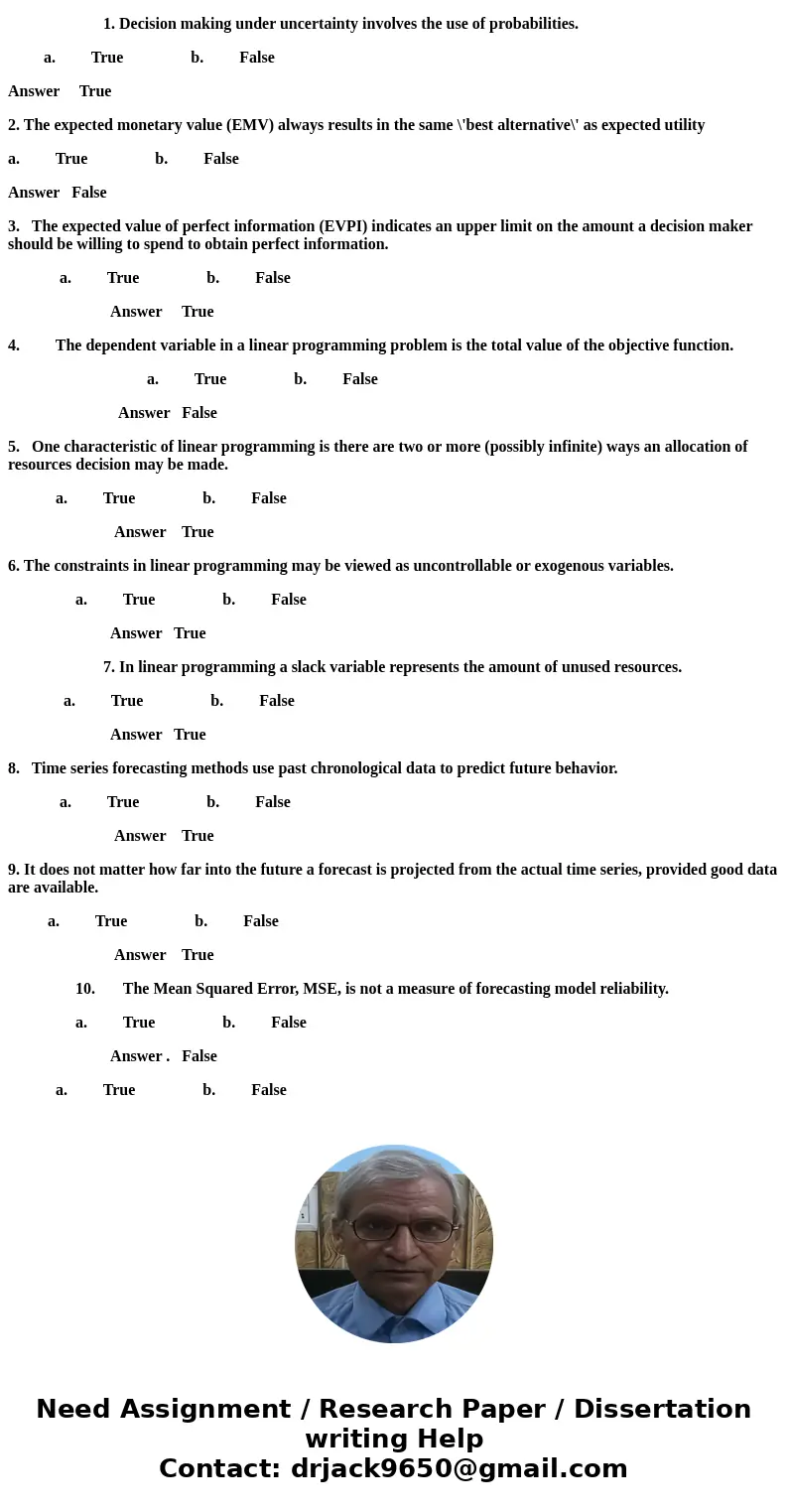1 Decision making under uncertainty involves the use of prob
1. Decision making under uncertainty involves the use of probabilities.
a. True b. False
2. The expected monetary value (EMV) always results in the same \'best alternative\' as expected utility.
a. True b. False
3. The expected value of perfect information (EVPI) indicates an upper limit on the amount a decision maker should be willing to spend to obtain perfect information.
a. True b. False
4. The dependent variable in a linear programming problem is the total value of the objective function.
a. True b. False
5. One characteristic of linear programming is there are two or more (possibly infinite) ways an allocation of resources decision may be made.
a. True b. False
6. The constraints in linear programming may be viewed as uncontrollable or exogenous variables.
a. True b. False
7. In linear programming a slack variable represents the amount of unused resources.
a. True b. False
8. Time series forecasting methods use past chronological data to predict future behavior.
a. True b. False
9. It does not matter how far into the future a forecast is projected from the actual time series, provided good data are available.
a. True b. False
10. The Mean Squared Error, MSE, is not a measure of forecasting model reliability.
a. True b. False
Solution
1. Decision making under uncertainty involves the use of probabilities.
a. True b. False
Answer True
2. The expected monetary value (EMV) always results in the same \'best alternative\' as expected utility
a. True b. False
Answer False
3. The expected value of perfect information (EVPI) indicates an upper limit on the amount a decision maker should be willing to spend to obtain perfect information.
a. True b. False
Answer True
4. The dependent variable in a linear programming problem is the total value of the objective function.
a. True b. False
Answer False
5. One characteristic of linear programming is there are two or more (possibly infinite) ways an allocation of resources decision may be made.
a. True b. False
Answer True
6. The constraints in linear programming may be viewed as uncontrollable or exogenous variables.
a. True b. False
Answer True
7. In linear programming a slack variable represents the amount of unused resources.
a. True b. False
Answer True
8. Time series forecasting methods use past chronological data to predict future behavior.
a. True b. False
Answer True
9. It does not matter how far into the future a forecast is projected from the actual time series, provided good data are available.
a. True b. False
Answer True
10. The Mean Squared Error, MSE, is not a measure of forecasting model reliability.
a. True b. False
Answer . False
a. True b. False


 Homework Sourse
Homework Sourse